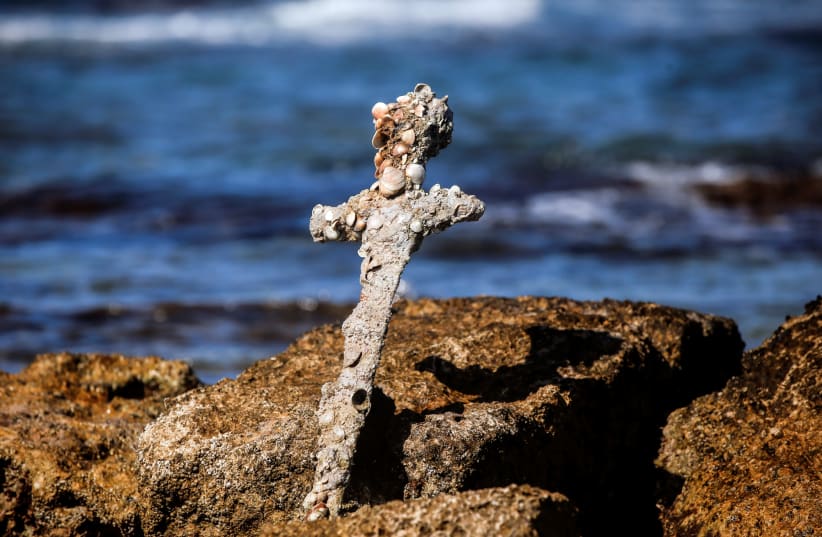An impressive meter-long sword dating back to the Crusader period was found by a scuba diver on the seabed off the Carmel Coast, the Antiquities Authority (IAA) announced Monday.
Shlomi Katzin, a diver from Atlit, spotted several ancient remains such as pottery fragments and stone and metal anchors, as well as the blade, which probably resurfaced after the shifting of sands. Fearing that the artifact might get covered up again, he brought it to the surface and contacted the IAA.
“The sword, which has been preserved in perfect condition, is a beautiful and rare find and evidently belonged to a Crusader knight,” said IAA’s Robbery Prevention Unit Inspector Nir Distelfeld. “It was found encrusted with marine organisms but is apparently made of iron. It is exciting to encounter such a personal object, taking you 900 years back in time to a different era, with knights, armor and swords.”
The Carmel Coast witnessed important moments in the history of the Crusades.
Pursuing the idea of liberating the holy sites from Muslim rule and encouraged by the Roman Catholic Church, European powers initiated several military campaigns in the Middle East between the 11th and 13th centuries, which led to the establishment of a number of Christian states in the area of modern Israel, Lebanon and Syria.
In 1187, the Muslim Sultan Saladin managed to defeat the Crusader states and reconquer Jerusalem, prompting King Richard I of England, celebrated as “The Lionheart,” to initiate another military campaign to regain Christian control over the Holy Land. Richard’s actions led to a wave of “Crusader fever” in England, resulting in unprecedented antisemitism in the island nation, including a massacre of Jews at York, among other killings.
After Acre surrendered to him, the king started to descend along Israel’s coast with his forces to reconquer Jaffa, some 120 km. (75 miles) south, and marched through the area.
In 1191, the Christian troops defeated Saladin’s army in the battle of Arsuf.
Over the centuries, the waters by the Carmel Coast were sailed by thousands of boats.
“The Carmel coast contains many natural coves that provided shelter for ancient ships in a storm, and larger coves around which entire settlements and ancient port cities developed, such as Dor and Atlit,” IAA’s Marine Archaeology Unit Director Kobi Sharvit noted. “These conditions have attracted merchant ships down the ages, leaving behind rich archaeological finds. The recently recovered sword is just one such find.”
The specific site where the sword was found was already known by the IAA. Previous finds suggested that it was used as a natural anchorage as early as 4,000 years ago, during the Late Bronze Age.
Identifying archaeological remains on the seafloor often presents challenges because of the ever-shifting conditions. For this reason, fortuitous discoveries can make a big difference.
“Underwater surveying is dynamic,” said Sharvit. “Even the smallest storm moves the sand and reveals areas on the seabed, meanwhile burying others. It is therefore vitally important to report any such finds and we always try to document them in situ, in order to retrieve as much archaeological data as possible.”

